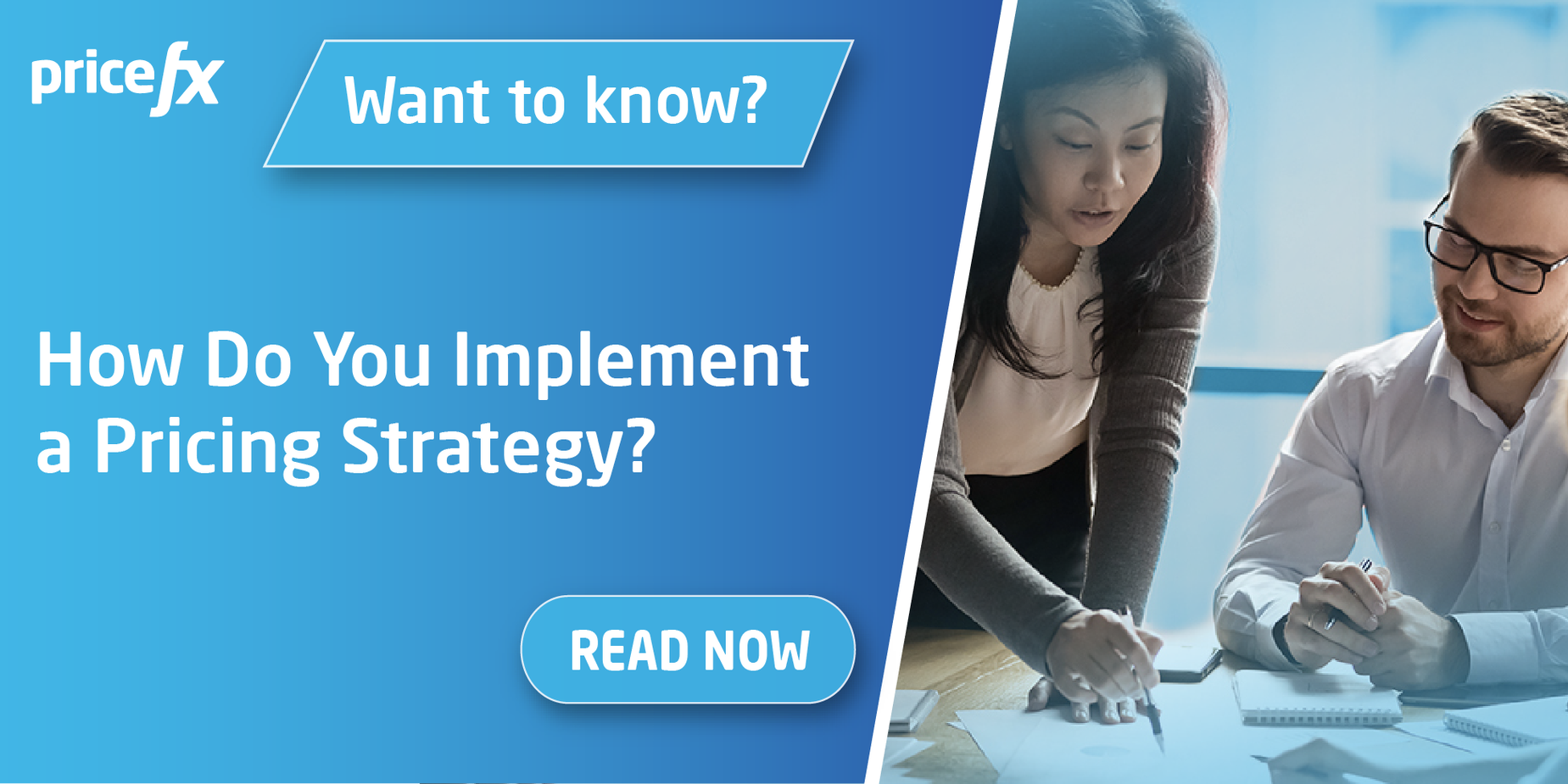Food & Beverage Pricing Strategy: Tips, Types & Examples
May 25th, 2022 (Updated 03/10/2023) | 15 min. read
By John Gilbo
Food and beverage manufacturers have watched in horror over the last 2 years while your input prices have skyrocketed and placed pressure on already constrained margins. What’s more, it is not exclusively food and beverage ingredient prices that are swollen to record levels. Record fuel prices and labor shortages are also an enormous part of the margin compression puzzle. Roll in other factors into the pricing equation like meat prices undergoing rapid rises as the cost for grain to feed animals climbs, and beverage makers are facing a jump in packaging expenses for plastics and aluminum. In this uncertain climate, re-examining your food industry pricing strategy will be critical to your ongoing business success.
At Pricefx, we have been helping our Food and Beverage Industry clients to make data-informed and real-time pricing decisions for more than 10 years now, empowering them to run pricing-efficient organizations and enabling them to protect their profits.
In this article, we will analyze the best pricing strategies that food and beverage companies might consider for their businesses, recognizing and acting on pricing strategy complications, and tips for setting up a modern and technology-driven pricing strategy in the current unpredictable market conditions pricing strategy in the current continuously evolving market conditions.
Types of Food & Beverage Pricing Strategies & What is Right for Your Business
There is no one single right answer to advise what is the best pricing strategy for your food and beverage industry business. The most crucial factor/s will be;
a) You have one and that;
b) You are proactively keeping an open mind to adapting to sudden changes in market forces on the fly.
Your company’s specific pricing strategy should be unique to your food and beverage business and should reflect your company’s preferences, strengths, and weaknesses, and with that, naturally consider the overall objectives that your business is trying to achieve. 9 times out 10 that will be about maximizing profit but remember there are other business outcomes you might need to consider in the short term.
Critical to whatever strategy or combination of strategies you decide to employ, seek to make scientific data-informed pricing decisions wherever possible. Using the available technology to power your pricing will be fundamental to unearthing the precise price optimization points for your food and business industry products to eliminate margin leakage and maintain your organization’s profits. And remember, your pricing strategy might not be solely about protecting profit.
Even if your short-term business objective is more about raising production volume, you’ll still need to be analyzing and tracking the visibility of all the cost components to ensure you are still making as much profit as possible along the way.
There are a range of different food and beverage pricing strategies that you can consider reach your desired business outcome;
- Discount Pricing Strategy – Discount pricing (or sometimes referred to as ‘Trade Promotion’ within the food and beverage industry) is a type of pricing strategy where you mark down the prices of your products. The goal of a discount pricing strategy in food and beverage can be to win new contracts or as bargaining chip in contract negotiation, clear ageing food and beverage items from your warehouse shelves, or simply increase sales volume. Most businesses will also use alternate pricing strategies, so they are not required to depend on discount pricing for extended periods.
- Competitive Pricing Strategy – A competitive pricing strategy (a pricing method that involves setting the prices of your products in relation to the prices of your competitors) is often used in the food and beverage sector to win new deals and contracts.
- Cost-Plus Pricing Strategy – Cost-plus pricing is sometimes also referred to as ‘markup pricing’ Cost-plus is a pricing strategy whereby a fixed percentage or fixed amount is added on top of the production costs of a single food and beverage item, resulting in the selling price of your specific product/s.
- Economy Pricing Strategy – The objective of an economy pricing strategy is to set your prices as low as possible, whilst still being able to make a small profit on each item.
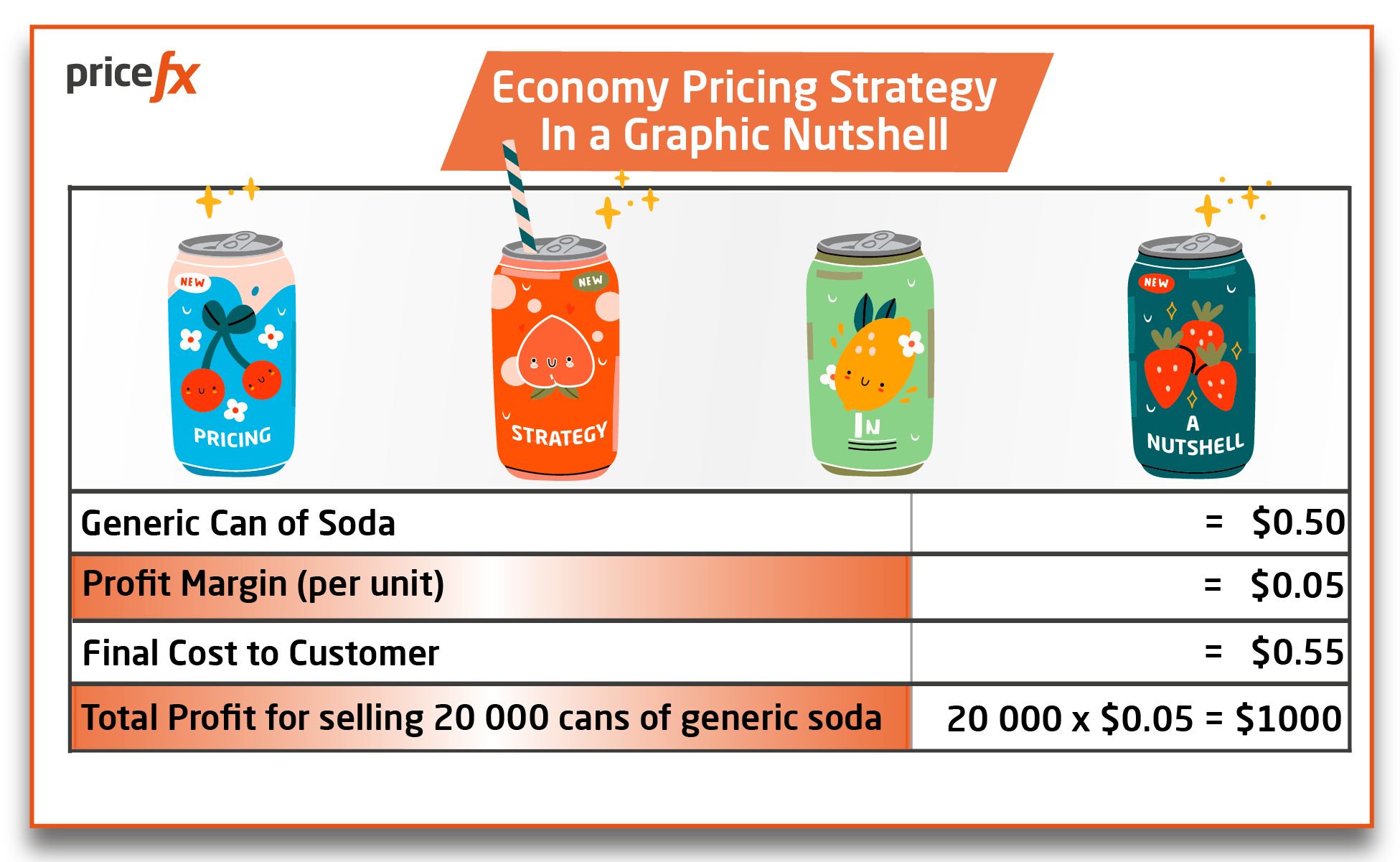
The concept is based on selling as many units as possible of your product/s as possible. Being based on volume selling, this type of pricing strategy is also commonly referred to as ‘volume-based’ pricing strategy.
- Penetration Pricing Strategy – Penetration pricing is a pricing strategy that is often used by new companies to gain a significant market share quickly by setting an introductory low price to entice customers to buy their food and beverage products. Established companies also use the strategy when launching a new range of drinks, cereals, cookies etc. to build market share.
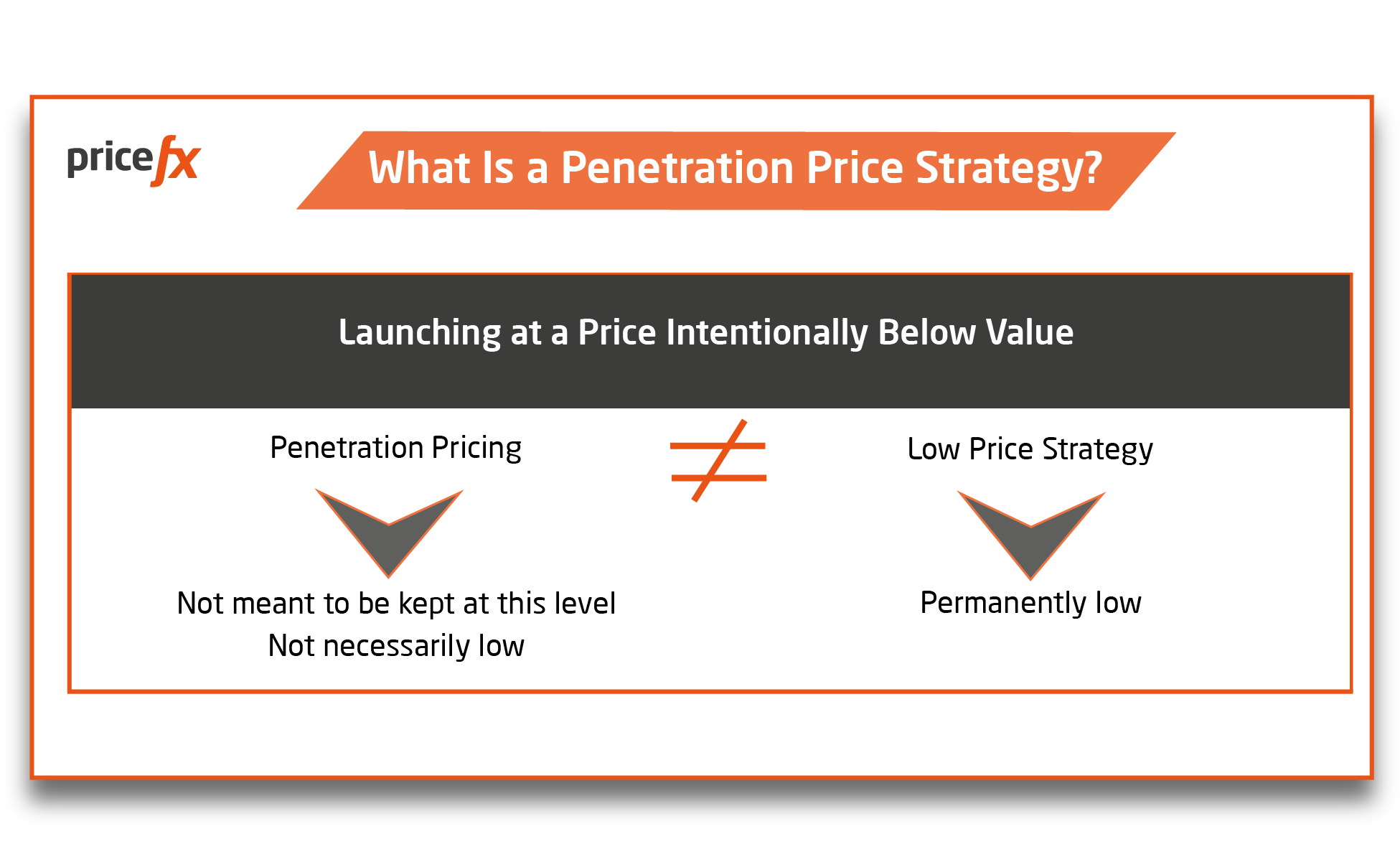
Most importantly, with a penetration pricing strategy, you will need to have a planned ’exit strategy’ from your introductory low price of your new drinks, cereal, or cookie line.
Having a detailed plan to raise prices and return to your regular selling price will be key, and equally important will be open and transparent communication to your customers of how and when that price rise will occur to maintain relationships.
- Dynamic Pricing Strategy – Dynamic Pricing goes by many names such as real-time pricing, time-based-pricing, surge-pricing, and demand pricing. It is, by definition, a pricing strategy where a company sets flexible and variable prices on its food and beverage products depending on any number of standalone or competing factors such as demand, supply chain, competition, location, time frame, and other market conditions.
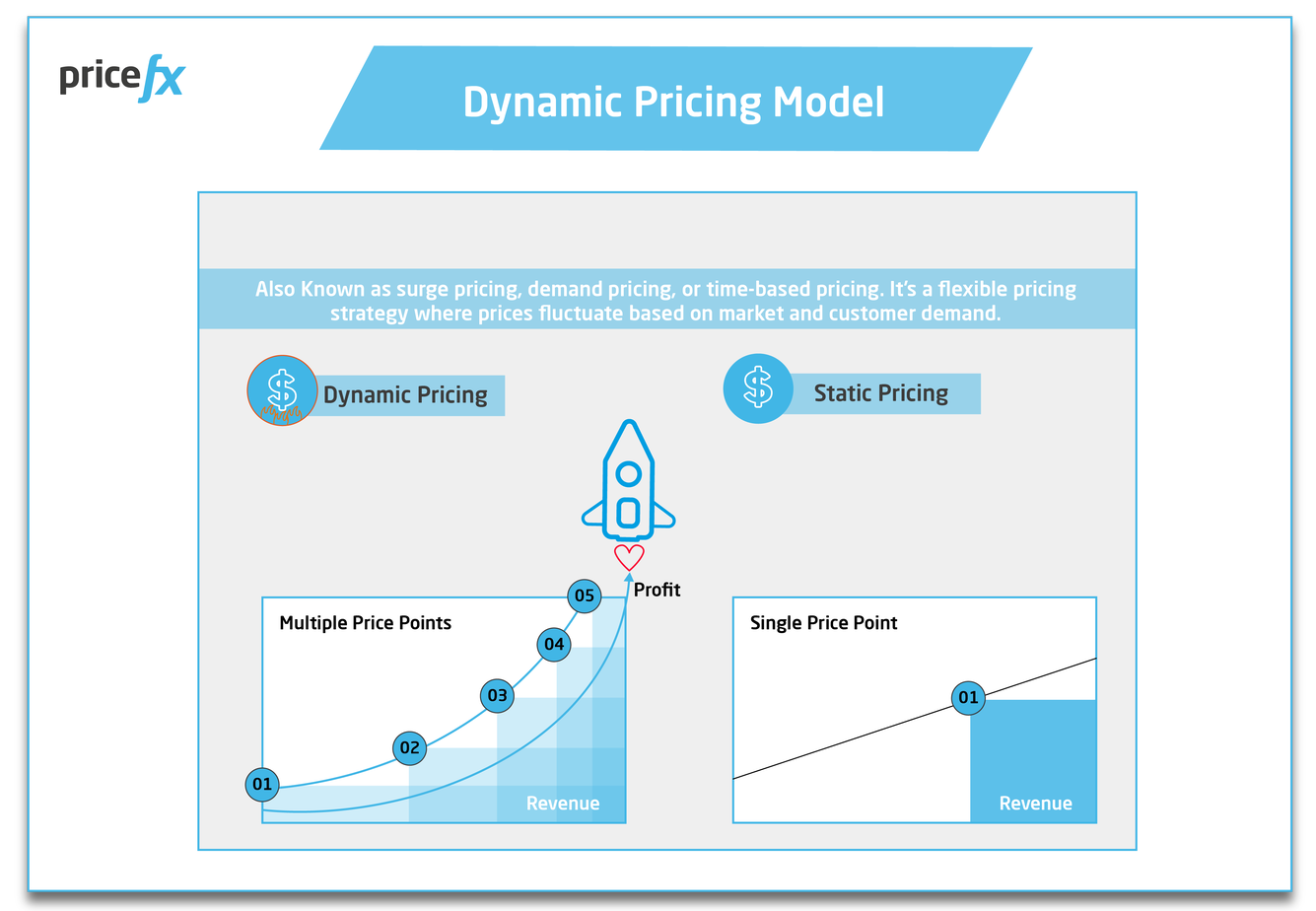
- Buy One Get One Free (BOGO) Pricing Strategy – Buy one get one: particularly prevalent and often used in retail/hospitality food & beverage; meaning if you buy something, you get another of the same product for no extra cost. See the below image indicating how a BOGO strategy can be more profitable for a business than a half-price discount strategy.
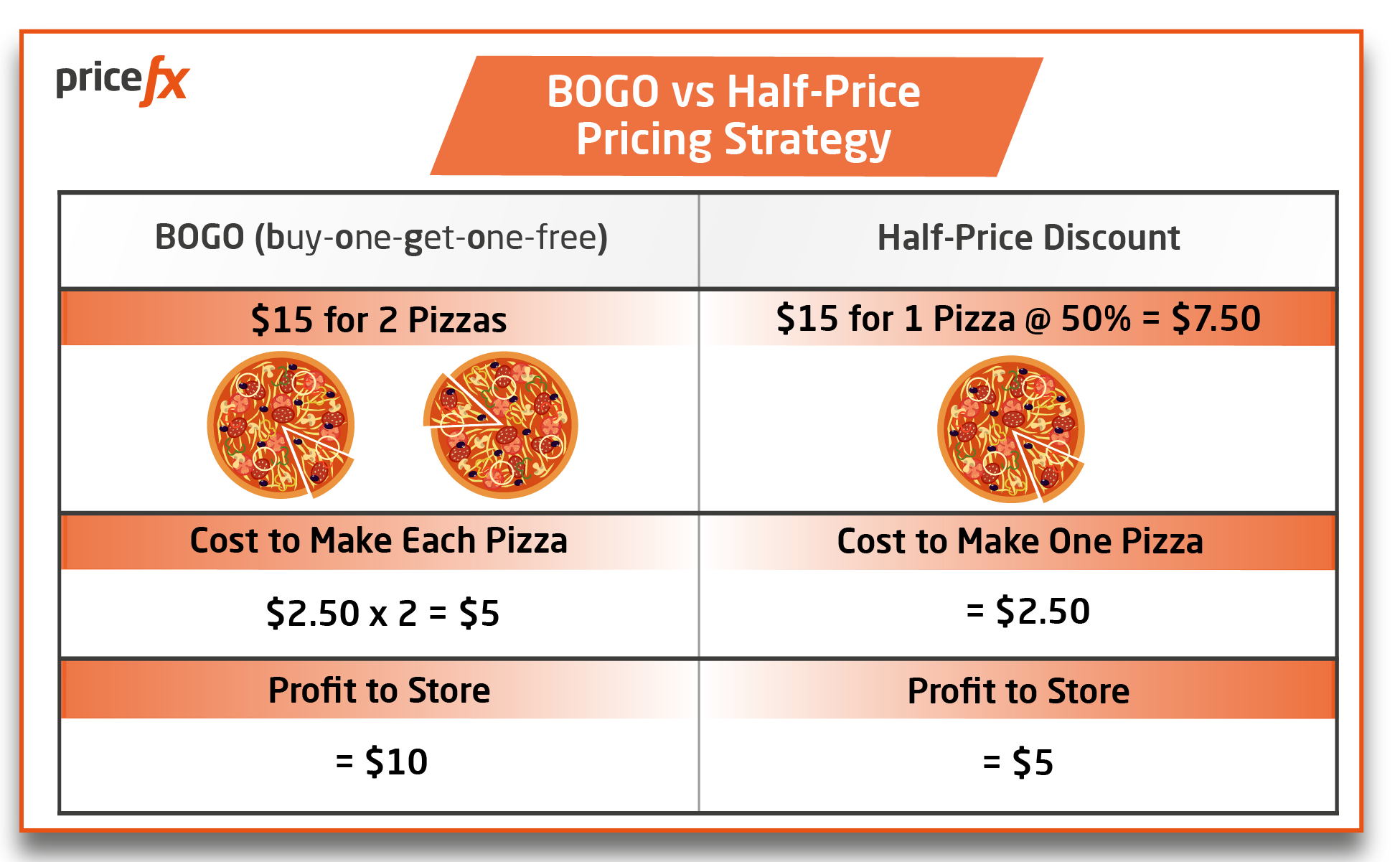
- Value-based Pricing – Value-based pricing strategy involves setting prices primarily based on a consumer’s perceived value of a product or service —also known as customers’ willingness to pay—to determine the price it will charge. As value-based pricing is primarily concerned with customers’ priorities, it’s occasionally called customer-focused pricing.
As a food and beverage industry player, more than anything, you’ll know the value of products and your service. In other words, don’t discount away your value if your customers recognize the value of your extra services such as same-day delivery of your produce orders for example.
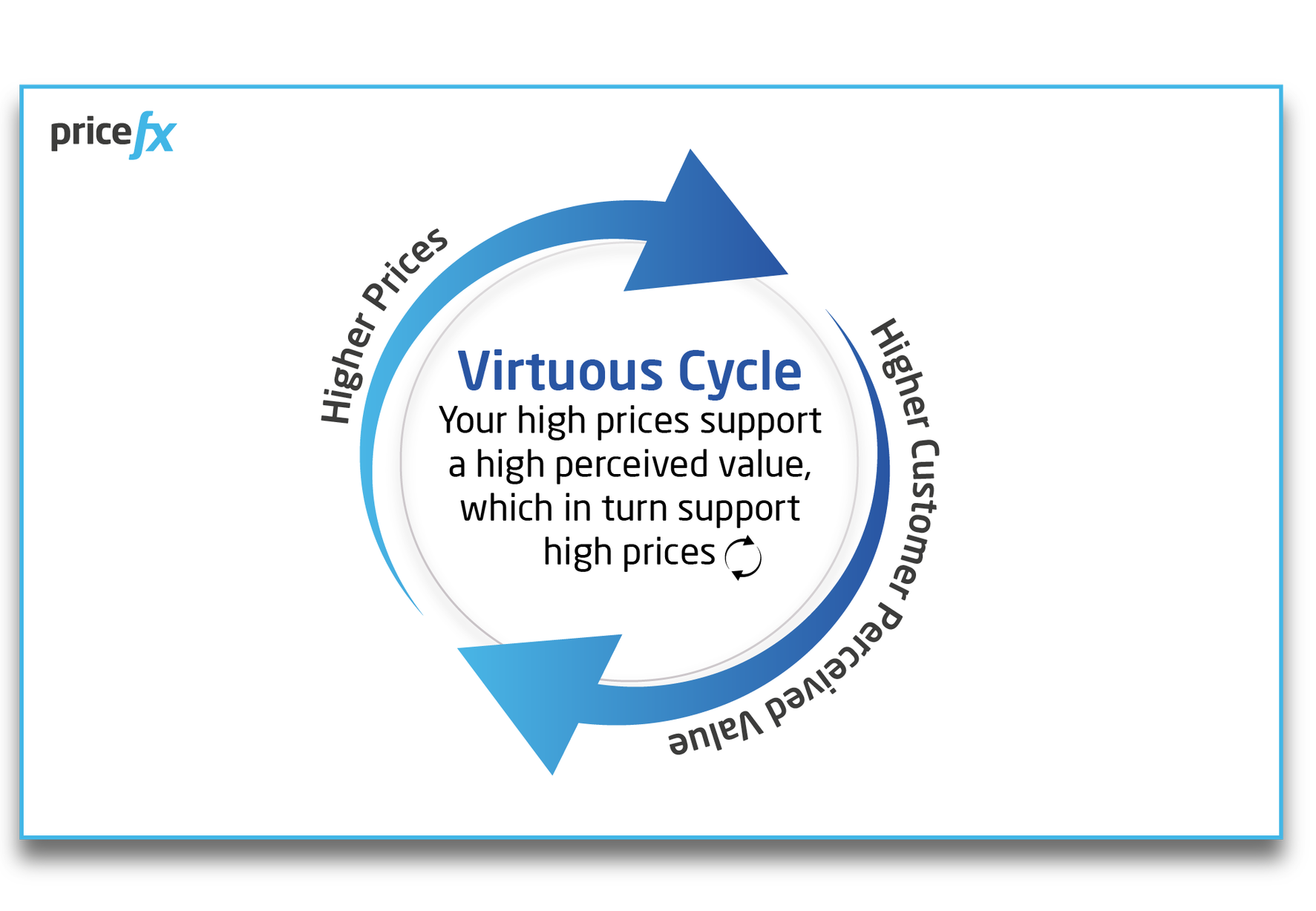
Why Food & Beverage Pricing is Different – Important Points for Your Pricing Strategy
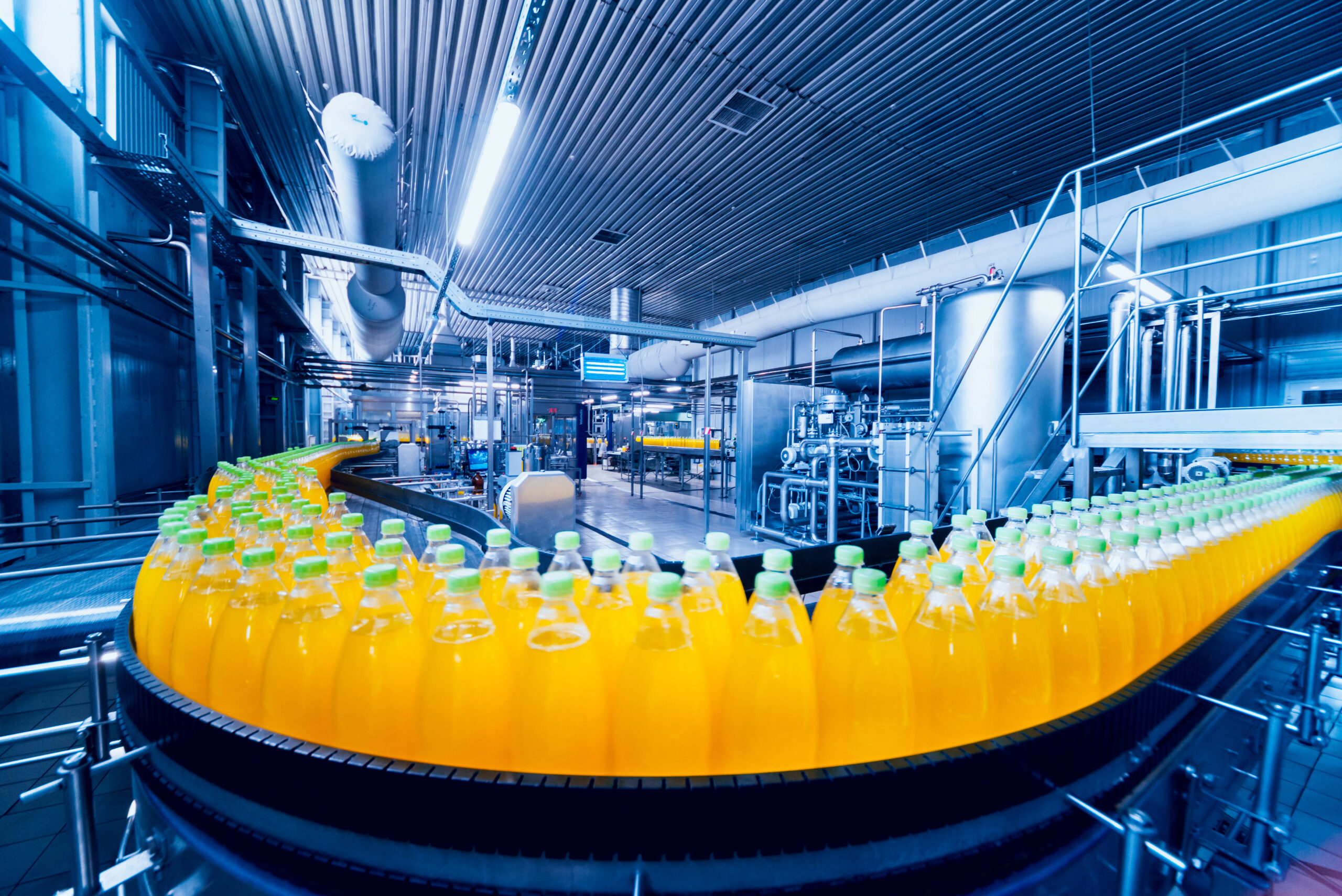
Whichever pricing strategy you choose for your food and beverage business, you should be aware that in this industry there are a range of unique and key factors that you need to consider before choosing a pricing strategy to implement.
It has become more necessary than ever as now rampant inflation is present, and major supply chain instabilities have led to demand spikes and supply backlogs on food and beverage manufacturers. Ingredients feel like they are rising in price every other day, causing margin compression. Operations are requiring simplification due to labor shortages and customer demands are requiring the need of greater R&D investment. Post-pandemic, new competitors in the form of local shops and farmers markets have popped up, subsequently creating pressure on your lead and delivery times.
In this current uncertain environment, consider a pricing strategy (technology-driven and data-informed of course) that will:
Track the prices of materials and ingredients in real time – By employing speedy dynamic pricing, you can be empowered to pass on material and ingredient cost increases on to your customers rather than wear them yourself. And when it is time to decrease prices again, you will be in front of your competitors rather than following them.
Remain/Become aware how long it takes to produce one of your products and react quickly to those lead times – The more granular you can become with your lead times (with monthly or even weekly recalculations), then the better prepared you will be to protect against profit margin leakage due to around-the-clock price fluctuations.
Channel Diversification: The global pandemic tipped retail on its head with a switch from bricks-and-mortar to online shopping. Similarly, a push from wholesale to retail has seen some food and beverage companies rethink packaging and pricing to stay profitable.
Once upon a time, your business only packed flour in 25lb bags for consumption in pizza restaurants. Now you are also packaging and selling 2lb bags online to customers making their pizzas at home.
Track Every Dollar: With inflation leading to margin compression, you will want to keep it granular and track all your costs closer than ever before. Pricing software can assist in providing the granularity required on all your production and delivery costs, not to mention identifying the profit that you may potentially leave on the table with outdated discounts, promotions, and rebates.
Watch/Analyze Market Trends & Demand for New Products: Another bi-product of the global pandemic has been expediting the speed of change in more health-conscious and eco-friendly diets. Stay relevant by keeping up with market trends, invest in research and development, and add value to your product portfolio where you can. A new breed of customer can and will pay more for healthy products.
Your customers are ‘Willing to Pay’ if they see Value – Value-based pricing ensures that your customers feel happy about paying your price for the value they are getting. Pricing according to your products’ value prevents you from short-changing yourself while creating a unique buyer ‘feeling and experience’ for your customers that is aligned with their expectations.
To set it up, you will require pricing software tools that help you understand where the value in your product line/s exists and enable customer profile and segmentation.
By doing so, you can strengthen your brand perception, build better customer relationships, and overall, lift your bottom line.
McDonalds Pricing Strategy – A Famous F & B Industry Pricing Example
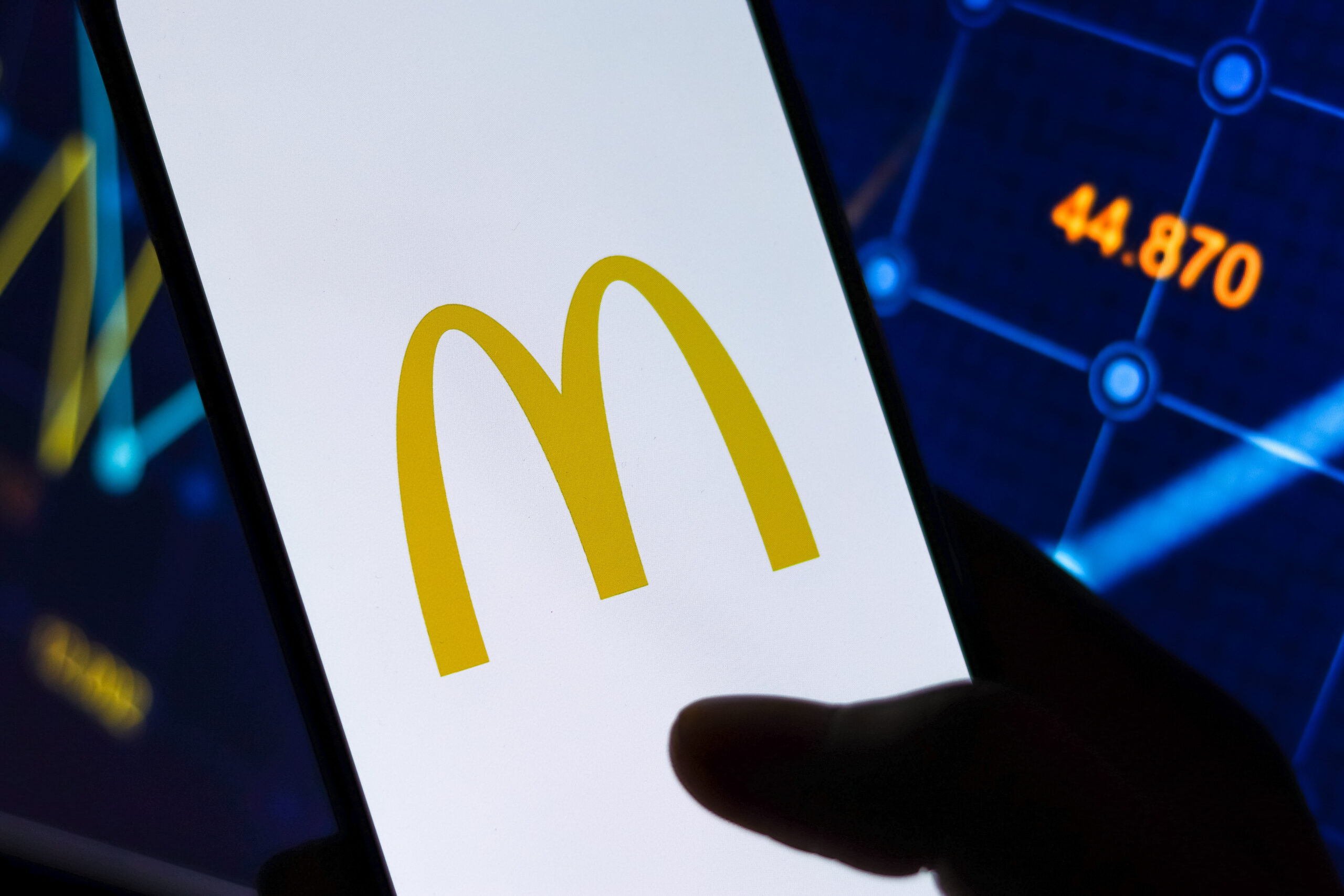
As most reading this article will be aware, McDonald’s is a globally popular fast-food business with outlets operating all over the world. Having begun operations in the sixties, McDonalds currently boasts more than 30 000 restaurants worldwide.
Since its beginning, the success of McDonald’s has been attributed to great customer service, and it’s everyday low pricing strategy (EDLP), on which it built its name. Known the world over for a good quality Big Mac and Fries, friendly service, and low prices that most people can afford. And then……….along came the hit movie ‘Supersize Me’ (outlining how unhealthy a diet consisting of only McDonalds food could be).
McDonald swiftly switched it up and brought in different and healthy product lines like salads and apple wedges. But in doing so, McDonalds also introduced a new pricing structure for many of the so-called ‘unhealthy items,’ introducing the $1 product lines on items like cheeseburgers, medium fries, shakes or apple pies.
The issue was the newly reconfigured dollar menu gave McDonald’s customers too many additional items to add to their orders. The new McDonalds menu was found to have a counter-intuitive impact on customers: i.e., the more items available to be added to their orders, the traffic in McDonalds stores decreased.
The aim of the new McDonalds pricing strategy was to add more options to the menu to increase profits, but it actually reduced sales volume as loyal customers saw $1 items as too cheap and without value.
To find a balance the McDonald’s new pricing strategy and at the same time finding healthier alternatives, McDonalds went back to basics, but with a product segmented twist.
Through transforming their menu to healthier options, the McDonald’s new pricing strategy is to find new customer segments (and market them accordingly through social media) and keep loyal customers by eliminating the $1 items and raising the prices on them, therefore reinforcing the value perception among those customers that love their cheeseburgers and fries.
In other words, McDonalds reacted by putting in place a hybrid pricing strategy with different strategies being applied for different customer segments.
The take-away (pardon the awful pun) point – While your business may not be a global behemoth like McDonalds, there is a critical lesson to be learnt.
It is all about becoming more agile with your pricing.
Being prepared to pivot, ‘change it up’ and switch your food and beverage pricing strategy to something different, or even a hybrid combination of pricing strategies may make the difference between maintaining a profitable business or becoming a struggling one.
Tips for Setting a Modern, Efficient & Agile Food & Beverage Pricing Strategy

Consider these tips when looking to apply a pricing strategy for your food and beverage business to become more robust, in the current rapidly evolving and uncertain times;
Use Data Analysis & Technology to Enhance the Outcome of your Chosen Pricing Strategy: Applying a pricing strategy that can keep pace with the rampant current rate of change in inflation, rising fuel prices and supply chain disruption is key, and data-informed pricing software is best way to achieve that.
If you have an unlimited army of employees to input data 24-7 into Excel spreadsheets then it may be possible without pricing software, but who can, or even more importantly, wants to do that?
Regardless of which pricing strategy you implement, enhancing your pricing response times is critical to avoid margin leakage. Part of that process entails providing sales teams with transparent optimal price corridors for specific quotes or transactions that can be viewed, projected, overridden, or constrained by external factors.
Set clear business objectives and breakdown your pricing plan: Your business objectives will be the critical component in deciding which pricing strategy you implement for your food and beverage company.
Will you seek to simply increase revenue, or will you be looking to turn small profits per item based on a large sales volume? Execute the pricing strategy that best reflects your company goal and how you expect to realize it.
Break down your business objectives into granular segments as much as possible. Analyze your larger plan and break it down into more detailed strategic plans. For example, if your organization’s goal for the fiscal year is to increase revenue by $10 million for the year, having a plan in place to know where that $10 million will be made up from across your various products, customer segments, different markets etc. will be important.
Identify and understand value drivers for your products at a granular level: Data tracking at granular levels is vital in optimizing your prices. Check your product list to identify and manage the value drivers to assist your food and beverage company to focus on the value of your products.
That focus can empower your business into taking specific actions to deliver the most value for your products.
Food and Beverage and grocery product distributors, for instance, usually have high everyday inventory turnover and therefore less storage costs to build into pricing like manufacturers or other industry distributors do for example.
Be prepared to pivot pricing strategies and adapt on the fly – To remain pricing relevant, you need to be able to react intelligently and quickly to fluctuating and sudden ingredient and commodity price shifts in to pass on increases (and decreases) to your customers.
Your pricing is now required to track and react to unforeseen drops in supply and unexpected surges in demand. Being equipped with the technology to support you in pivoting to serve new market segments and adapting to dynamic customer needs is key.
Food and beverage, like most industries, is not immune to the requirement for a flexible pricing plan and agility is now everything in executing maximum profit protection.
The ever-changing ‘new normal’ looks like it will be with us for the foreseeable future, and responding quickly, strategically and with confidence will be critical ingredients to success.
Become a pricing Nostradamus: Backing your intuition and anticipation of market moves and developing customer trends with good data.
Having the technology on hand to run pricing simulations of speculative ‘what if’ scenarios can help you fully grasp the impacts of your potential price changes and test out how different pricing strategies can alter your business outcomes.
I’ve Decided on a Food & Beverage Pricing Strategy – What’s Next?
After reading this article on food and beverage pricing strategies, you are now fully informed on the tips and tricks to help you decide on and implement a customized pricing strategy to help your business prosper, drive growth, and maximize profit.
It could be you have potentially already chosen the best pricing strategy that fits your company’s unique business objectives. It may have also become clearly apparent that through the need to drive your decisions with data and optimize your individual market segments, next generation pricing software like Pricefx will be required.
But what comes first – the chicken or the egg? – and how can you begin implementing your customized, granular, and future-proofed food and beverage pricing strategy?
If you would like to learn more about how to implement a unique pricing strategy for your business, check out the advice in this practical article below:
